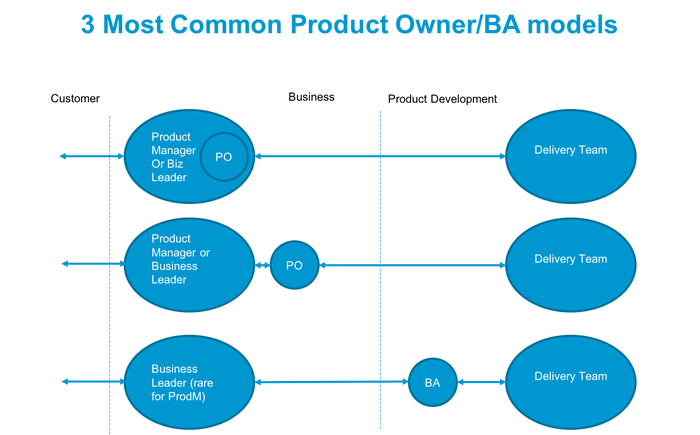A common question in organizations involves determining who should be the product owner of an initiative. Here are some general recommendations:
- If the result of the effort is a product that is going to be sold, then the person filling the Product Owner role is usually someone in a Product Management setting who “owns” responsibility for the Profit/Loss of the product.
- If the result of the effort is for use internally in an organization, the ideal Product Owner is the person who is responsible for the business process that the system is supporting. For example, if you have a system that is going to be used for Claims Processing, then the ideal Product Owner would be the head of the claims processing department.
But now reality comes into play. The person who owns the business process will often not have the skills or the time to effectively act as a product owner when you think about what a Product Owner is expected to do. As a result of this, a few models have risen up in the wild to figure out where the Product Owner sits. Todd Little put together a nice graphic to describe these different models:

Product Manager or Business Leader is the Product Owner
It’s easy to pick the product owner in this setting – it’s the perspective I described above.
Product Owner is a separate role from the Product Manager or Business Leader, but reports up through the business part of the organization
Fill the Product Owner role with someone in the business organization that has the skills to facilitate decision-making, and has analysis skills
Business Analysts on the IT side and no specific Product Owners
Find the person on the IT side who has the ability to facilitate decision-making (they should have analysis skills if they are in fact a good BA)
If you know what model you are in and have multiple people sitting in that position, or you can’t quite tell what model is best for your situation, another way of deciding who should be a Product Owner is to consider the characteristics a product owner should have:
- Responsibility (to make decisions)
- Availability (to work with the team to answer questions)
- Knowledge (to answer the team’s questions and to organize work appropriately)
So the best way to determine who the appropriate Product Owner is is to see if there is someone who possesses most of the above criteria.
For some other perspectives, check out this resource on our website: Introduction to Agile Product Management.
If you are a member, you can watch this video for more information: Requirements, Product Ownership, and Other Misunderstood Concepts in Agile Development.
How does your organization determine who should be Product Owners?
Please leave a comment and share your thoughts.

![[Case Study] Lessons from descaling 25 Scrum teams](https://www.agilealliance.org/wp-content/uploads/2024/12/descaling-teams-1200x630-1-150x150.jpg)



![[Case Study] Lessons from descaling 25 Scrum teams](https://www.agilealliance.org/wp-content/uploads/2024/12/descaling-teams-1200x630-1-300x158.jpg)



